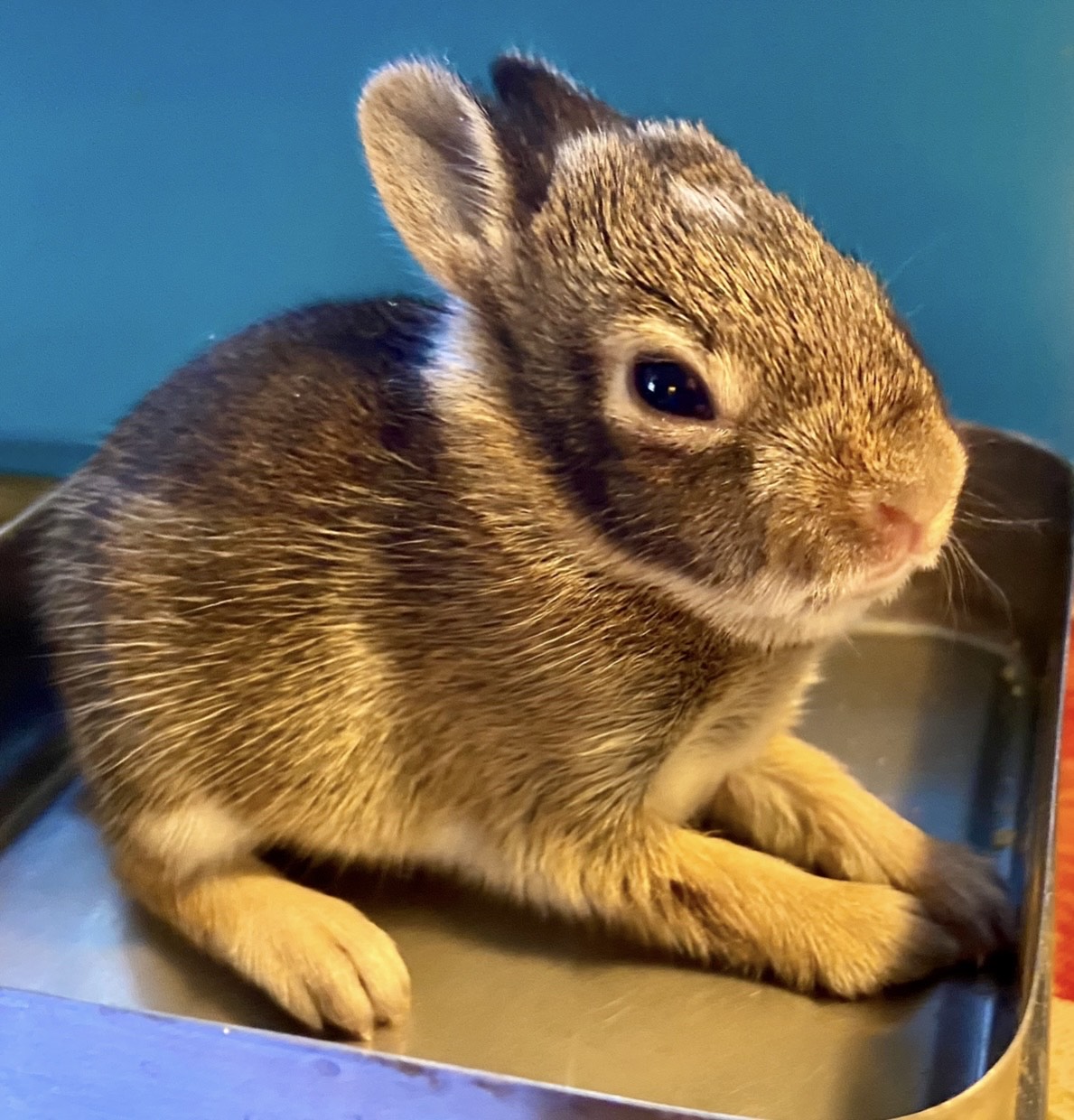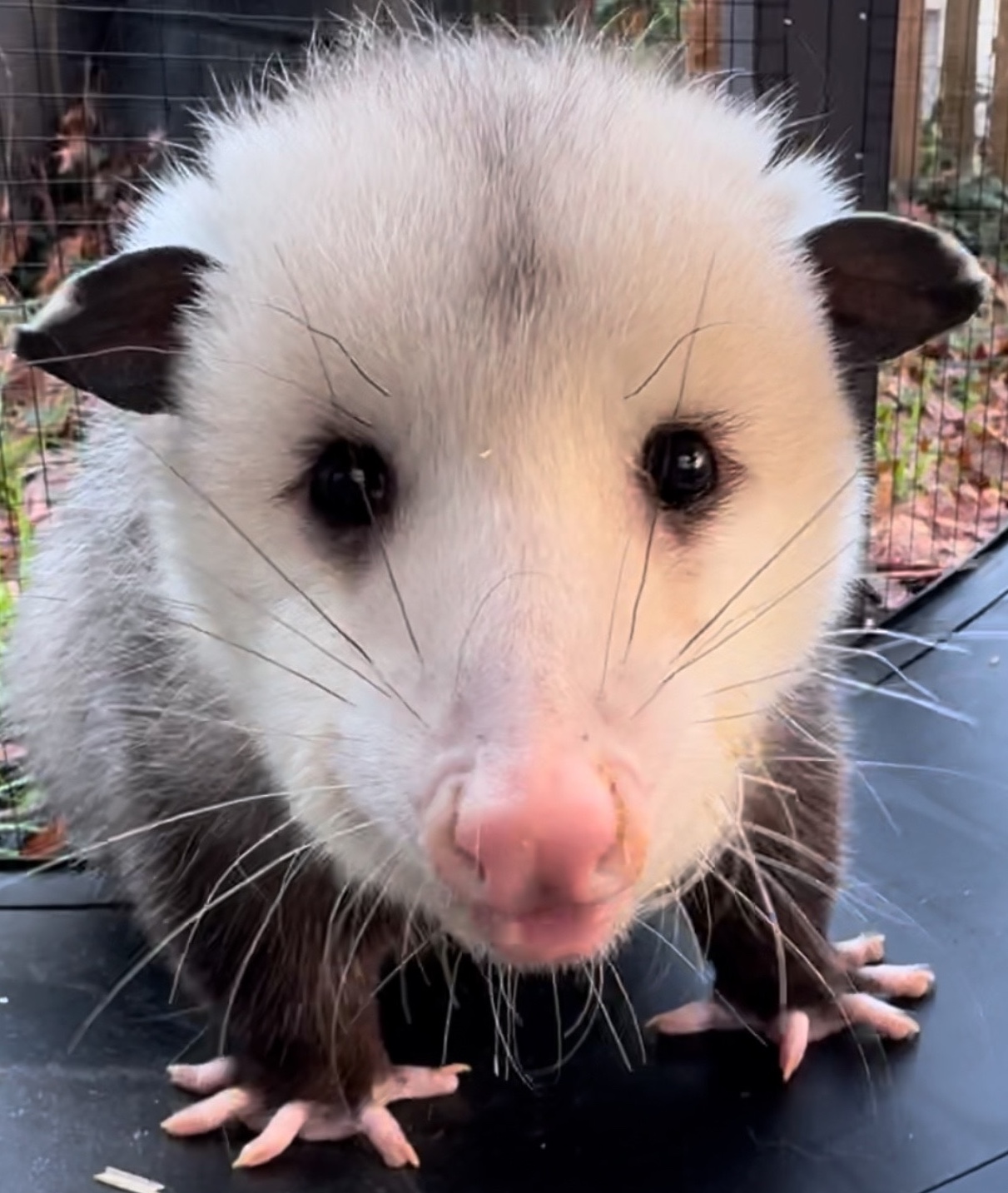Picture this: You’re driving down the highway and see a bunny limping down the side of the road. The bunny is very small, its leg is clearly hurt, and the mother is nowhere to be found. You pull over and manage to coax the poor baby animal into an old blanket.
You walk back to your car, carefully holding the small animal. You obviously can’t leave this injured animal to fend for itself, and you can’t take it home and keep it as a pet (even though you might be tempted). What do you do now?
If you’re near Cincinnati, Ohio, you call WEST Wildlife Rehab.
Since 2018, Beth Kelly, founder of Wildlife Emergency Services Team (WEST) Wildlife Rehab, has been rescuing injured and abandoned wild animals and rehabilitating them. When the animals are ready, Kelly and her team release them back into the wild. To date, Kelly and her team have rehabilitated around 3,000 animals.
“I’ve been rehabbing for about nine years. There were four of us who got together and founded what was originally called “Wildlife Emergency Service Team” in 2018 — that’s when we became a nonprofit rescuing just mammals, small Ohio mammals. So bunnies, squirrels, possums, raccoons, and mice.” Oh my!

WEST Wildlife Rehab case study results at a glance
Streamlined operations and time savings
Jotform has helped WEST to save around 3,000 animals over seven years
Simple data tracking and filtering
Jotform allows Kelly to quickly track data when she’s handling 50 injured animal calls per day
Efficient donation collection
Integrating PayPal with Jotform allows WEST to collect donations with ease
The challenges of wildlife rehab
After speaking with Kelly for about thirty minutes, it was apparent she is very passionate about her work. However, wildlife rehabilitation does come with some unique challenges
Reporting to the Department of Natural Resources
Running a wild animal rehabilitation nonprofit comes with some unique challenges. Perhaps the biggest challenge is reporting every single animal WEST has rescued to the Division of Wildlife, part of Ohio’s Department of Natural Resources.
Every March, Kelly has to turn over information on every single animal she’s received in the previous year. Kelly is required to include many details, like when the animal came under her care, if they were released successfully, what species they belong to, and how long they were under her care. In the busy season, Kelly can get up to 50 calls a day, so tracking all this information can be a daunting feat.
“We have final disposition forms for every animal that we intake. So basically, from January to January, you’re responsible for keeping track of how many animals you took in, how many you released, how many didn’t make it . . . or how many were placed as education animals. And we send that to the [Division] of Wildlife. I’ve tried to keep track of everything as it comes in . . . there’s just so many moving parts to Wildlife Rehab.”
Tracking volunteer intakes
Not only does Kelly have to track the animals she personally rehabs, she also has to track the animals her subpermittees rehab. Subpermittees are volunteers who help Kelly rehab animals.
They don’t yet have their wildlife rehabilitation permits, so they have to report their rehabilitation efforts through Kelly. Of course, the help is welcome, but this requires Kelly to report even more animals to the Department of Natural Resources.
“I’m responsible for not only maintaining records for the animals that are in my care, but also for the animals that I transfer to subpermits to rehab on my permit. And so I have to keep track of how many I transferred out, how many they released, or how many died in their care.”
Filling out forms in the field
Kelly and her team almost always meet animals in the field. This means WEST needs an intake form that can go wherever the team does. Paper forms can go anywhere, but that doesn’t mean they should. Paper forms are a bit awkward to fill out, they get lost, handwriting is hard to read, and they don’t always get returned in a timely manner.
The intake data Kelly collects also has to be uploaded to the Department of Natural Resources website, so using paper forms creates more data entry. Kelly personally finds them a bit awkward to distribute when she’s in the middle of trying to care for an animal.
“You know, the person sitting next to their car, and they’ve got a piece of paper balanced on their leg, and they’re trying to fill out the intake form, and just being able to text it to somebody is so much easier.”
Collecting donations
As a nonprofit, WEST survives on donations. A majority of WEST’s donors are its callers that report hurt or abandoned animals. Sometimes they try to write Kelly checks or give her cash, but that can get complicated. Cash or checks mean a trip to the bank and another form to fill out.
“Occasionally, people will write a check and send it to us, or they’ll hand me cash, and I try to avoid that, just because it’s hard to keep track of and I don’t want to drive to the bank.”
Jotform helps WEST save animals
Luckily, Kelly has Jotform to help her with all of these challenges. Kelly says Jotform’s simplicity has made it easy to collect donations and track the animals she rescues.
Jotform enables us to save more animals. That’s the bottom line. It helps us get donations.
Jotform has streamlined WEST’s intake and donation processes. When it’s time to report her rescues, Kelly has all the information she needs at her fingertips.
“It’s great because, you know, with one easy text, I get back the information that I need for the [Division] of Wildlife that wants that documentation of me receiving that animal.”
Streamlined intake forms and reporting
Now when WEST rescues an animal, all it has to do is text the caller a form link. The caller can complete the intake form on their own time. Even if they forget, Kelly says she can just text them the link again.
“Usually if they don’t send it in, you just text them a couple times and you get it back, because it’s so easy to do. I mean, they literally click on the link. I always tell people it takes like, 30 seconds to fill it out.”
Even if a caller isn’t comfortable with technology, it’s easy for a volunteer to help callers fill out a Jotform on their behalf.
“Sometimes it’s an elderly person . . . And what I do when that happens is I just ask for the address, which usually we have, because in those cases, it is usually one of our volunteers who has to go pick the animal up. I have the address, so I fill out the form myself, and then I still have the record of where that animal came from, what the address is, where it was found.”
Now, when it’s time to report to the Division of Wildlife, Kelly opens Jotform Tables and filters by species she’s rescued in the past year.
“Usually at the very beginning of January, I just open up the app . . . it’s really great, because you can filter what you want. So, if I want to find out how many foxes I took in, I just go to the top and I type in a filter for foxes, and it lists all the foxes I took in, along with who brought them to me, their email, their address, their phone number, when they brought it in.”
Native donation collection
To streamline donations and intakes, WEST has condensed its intake and donation processes into one form. With Jotform’s PayPal integration, callers can complete intake forms and donate to WEST in one form. Integrating WEST’s intake form with PayPal has increased donations and, in turn, helped WEST save more animals.
Beyond intake forms
Jotform’s ease of use and flexibility has helped WEST with its internal operations as well. Kelly uses Jotform to circulate liability waivers for her volunteers, which helps protect WEST, because wild animals can be unpredictable.
“Anytime we accept new volunteers, we have them sign a waiver saying that they’re not going to hold us liable for if they get bitten or if they get injured or all the things that are expected of volunteers. That’s on Jotform; I use it a lot.”
Kelly also puts on an art fair once a year or so, and she uses Jotform to take lunch orders for her artists.
Streamlined processes for more donations
Streamlining the intake process and integrating PayPal has made Jotform an integral part of WEST. Kelly even says she can’t imagine WEST without Jotform. Looking to the future, Kelly hopes to expand her operation, so she can save even more animals.
If you’re thinking about combining your donation forms with another type of form you use, do it! This method has helped Kelly save time and collect even more donations. Kelly’s idea of using Jotform’s PayPal integration is a great place to start. But if PayPal isn’t for you, Jotform has over forty payment processor integrations, so you’re bound to find one that works for you.
Photo by Kevin Wiley















































































Send Comment: